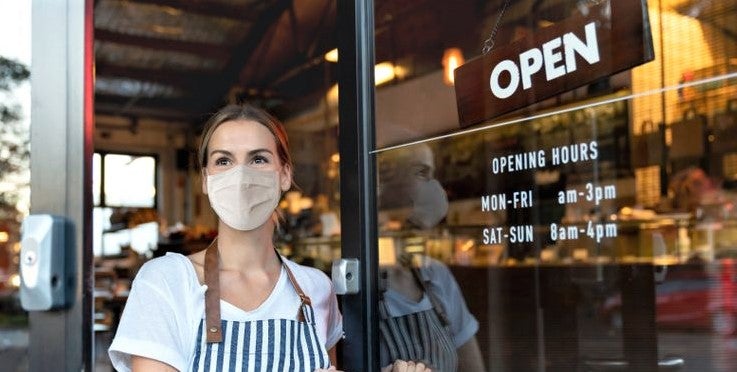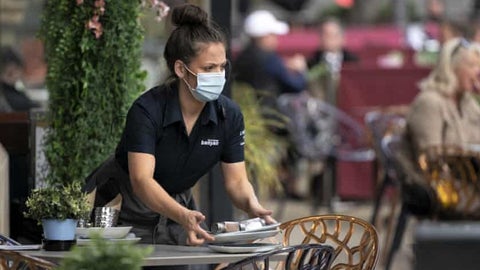Independent Restaurant Coalition Q&A: Discussing the Future of CA F&B
Leading members of the Independent Restaurant Coalition (IRC) and the Golden Gate Restaurant Association (GGRA) came together last night for a public Q&A over Zoom, providing insights into how US restauranteurs are set to benefit from the recently signed American Rescue Plan. Pointedly, the virtual event took place exactly one year after restaurants in the US first closed on an indefinite basis, on March 16th, 2020. Encompassing 500,000 businesses in the US, independent restaurants and food service facilities are a major component of the American economy – and represent one of the hardest-hit sectors.
In California alone, 42% of all jobs lost over the past year were enclosed within the hospitality industry, making President Biden’s COVID relief fund a lifeline for those who have been surviving on little to no income over the past 12 months. Valued at a total $1.9 tn, a substantial portion of that relief fund ($28.6 bn) will find its way into the hands of restaurant owners whose industry saw an economic downturn of more than a quarter of a trillion dollars across this pandemic.
Leading the virtual Q&A was Chief Operating Officer of the IRC, Erika Polmar; the GGRA’s Executive Director, Laurie Thomas, and its President Stacy Jed; and Laurie Aaronson, the CEO and Founder of AOC SF, an independent restaurant advocacy group based in the San Francisco Bay Area. Much of the information provided in this Q&A came courtesy of Polmar, offering a broad overview of the Rescue Plan’s specific statues, as well as answering queries prompted in the Zoom chat box.
Applying for business relief fund

Such is the difficulty of disseminating key findings of such a lengthy and complex piece of legislature as the COVID relief bill, it will first need to pass through the Small Business Administration, which will provide a clear breakdown of facts and a supplementary FAQ section. The estimated time requirement of this process extends to a couple of weeks, though it is believed that applications for the relief fund will begin as soon as April 1st.
The businesses eligible for application comprise an extended list of eateries and food service establishments, covering everything from food trucks and pop-up kitchens to museum cafés and full-service restaurants. The specifics of the bill prevent any business affiliated with a group of over 20 sites from applying for the relief funds; similarly exempt are state- or government-operated businesses, such as prison cafeterias.
Of the total $28.6 bn intended for restaurants, a $5 bn ‘pot’ will be allocated for the support of small businesses whose yearly revenue does not exceed $500,000.
How the relief fund affects California restaurants
As explained by Erika, the bill is designed to replace revenue lost over the past year, in order to cover all expenses accrued in the period between February 15th of last year and up until December 31st of this year. Those outstanding expenses must not have already been covered by PPP (payment protection program) stimulus checks, forbidding businesses from “double-dipping” into government relief funds, and may only be extended to businesses that are currently operating.
Restaurants which have ceased trading are not permitted access to funds that will cover any debts or expenses accrued in the leadup to their business termination.
When asked how this relief fund would affect the California hospitality industry – specifically relating to San Francisco's well-known culinary culture – Laurie Thomas outlined the long road to economic recovery that lies ahead for many restaurant owners.
“We are hopeful that we can all get as much of this money as quickly as possible,” she said, expressing hopes that San Francisco will soon be moving into its orange tier of COVID restrictions and that this federal aid will do great things for the city’s hospitality trade.
As it stands, the city is currently in the red tier, meaning San Franciso restaurants operate at 25% capacity while other indoor facilities, such as malls and gyms, operate at 50% capacity. The move to that less restrictive orange tier will depend on the county’s adjusted COVID case rate – between 1 and 3.9 being the optimal figure – and a positive test rate of 2%-4.9%. At the beginning of March, San Francisco’s adjusted case rate and positive test rate stood at 3.5 and 1.5%, respectively.
Calculating the value of your business relief grant

For individual applications, American citizens can expect to receive a maximum sum of $1,400 from the Rescue Plan, a third-wave stimulus check at the tail end of a year-long pandemic, but the calculation for businesses owners requires some more focused arithmetic. As cited in her comprehensive run-through of the relief bill’s specific impacts, Erika outlined a golden formula for arriving at the total grant value for which restauranteurs will be eligible:
Take the total sum of your 2019 (pre-pandemic) yearly revenue
Subtract that figure from your total 2020 (pandemic) yearly revenue
And subtract that resulting amount from the combined total of the two prior PPP stimulus checks received throughout this pandemic.
The resulting sum from that equation is the total dollar amount of the business grant you are eligible to receive under the American Rescue Plan. There are also caps placed on business collectives, with restaurant groups (organizations with more than 20 sites) eligible for a maximum relief grant of $10,000,000, and independent restaurants able to access a maximum of $5,000,000 in federal aid.
An exhaustive breakdown of the IRC mission statement covers any points about which restaurant owners may wish to enquire, including contact numbers and a lengthy FAQ section to cover any preliminary queries as the COVID relief fund begins to roll out nationwide. For more information on the American Rescue Plan and how it could affect your business, take a look at our news piece telling you everything you need to know.
Did you know that Buffalo Market has its own COVID relief fund? In a program known as the Restaurant Bridge, we offer restaurant owners a six-month line of credit that allows them to stock their larders with premium organic produce, satisfying customers and keeping their business afloat as they await their grant payments. See how the Buffalo Market relief fund could aid your business today and keep your kitchens supplied with market-quality ingredients, sourced from independent California farmers.


